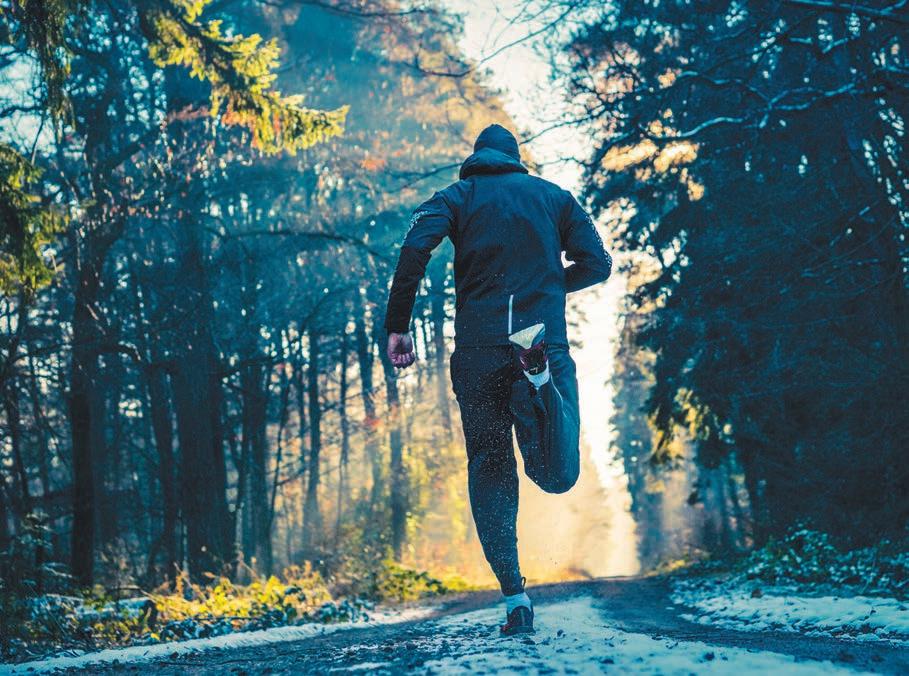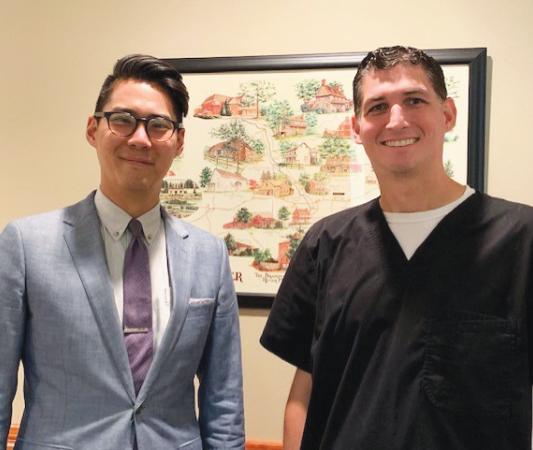
3 minute read
Oxford Family Eyecare .................................. Eye Care
Exercising Safely In the Cold
Many of us pack on the pounds over the winter because of a more sedentary season due to poor weather conditions. In fact, the average winter weight gain ranges from five to 10 pounds, according to a recent report by AccuWeather.
We avoid going outside as frequently to avoid the colder temperatures, rain, snow and ice. While this is understandable, many exercise experts say that walking, running or working out in cold weather actually offers many health benefits.
Get More Vitamins
While many avoid the cold, outdoor winter workouts are a great way to absorb small doses of sunlight. The sunlight can help to improve mood and help with vitamin D intake, according to the American Heart Association.
Stave Off Sickness
Winter exercise can also boost immunity during cold and flu season. A few minutes a day can help prevent simple bacterial and viral infections, according to the Centers for Disease Control and Prevention.
A Better Exercise Why work out in the winter? For one thing, there is no heat and humidity to deal with in colder weather. Winter’s chill might even make you feel awake and invigorated, according to the AHA. Regardless of exercise, studies have shown that being outside in cold weather can transform stubborn fat from our bellies and thighs into calorie-burning fat.
How to Exercise Safely The Mayo Clinic provides the following tips for staying safe during your cold-weather exercise.
Dress in layers. Dress in layers that you can remove as soon as you start to sweat and then put back on as needed. First, put on a thin layer of synthetic material, such as polypropylene, which draws sweat away from your body. Avoid cotton, which stays wet next to your skin. Next, add a layer of fleece or wool for insulation. Top this with a waterproof, breathable outer layer.
Drink plenty of fluids. Hydration is just as important during cold weather as it is in the heat. Drink water or sports drinks before, during and after your workout, even if you don’t feel thirsty.
Wear gloves. Wear a thin pair of glove liners made of a wicking material under a pair of heavier gloves or mittens lined with wool or fleece.


Dealing with PTSD
Post-traumatic stress disorder is a real illness faced by millions of Americans. You can get PTSD after living through or seeing a traumatic event, such as war, a major storm, sexual assault, physical abuse or a terrible accident.
PTSD makes you feel stressed and afraid after the event, and it can impact your daily life, relationships and future.
PTSD by the Numbers
Here are some sobering statistics on PTSD from the National Center for PTSD. • About 7% to 8% of the population will have PTSD at some point in their lives. • About 8 million adults have PTSD during a given year. This is only a small portion of those who have gone through a trauma. • About 10 of every 100 women develop PTSD sometime in their lives compared with about four of every 100 men.
What are the Effects of PTSD?
PTSD can cause many serious issues, including: • Flashbacks, or feeling like the event is happening again. • Trouble sleeping or nightmares. • Feeling alone. • Angry outbursts. • Feeling worried, guilty or sad.
PTSD can happen to people of all ages. Signs of PTSD may start soon after a frightening event and then continue. They can also start months or even years after a traumatic event, so it’s important to be honest with your physician or mental health provider if you start feeling signs of PTSD.
Effective Treatments to Discuss With Your Physician According to the National Center for PTSD, there are some therapies that have been proven most effective by medical and mental health professionals, including: • Prolonged exposure. Teaches you how to gain control by facing your negative feelings. It involves talking about your trauma with a provider and doing some of the things you have avoided since the trauma. • Cognitive processing therapy. Teaches you to reframe negative thoughts about the trauma. It involves talking with your provider about your negative thoughts and doing short writing assignments. • Eye movement desensitization and reprocessing. Helps you process and make sense of your trauma. It involves calling the trauma to mind while paying attention to a back-and-forth movement or sound (like a finger waving side to side, a light, or a tone).






